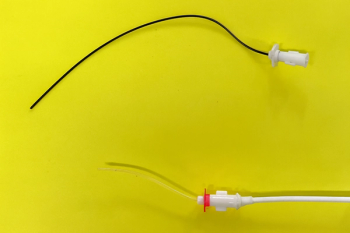
Journal Scan: Urinary incontinence in female dogs-how common is it?
The goal of this study was to provide more recent data on the prevalence of acquired urinary incontinence.
Untitled Document
Why they did it
The goal of this study was to provide more recent data on the prevalence of acquired urinary incontinence and determine which factors are most commonly associated with a diagnosis of acquired urinary incontinence in a large population of dogs that had undergone ovariohysterectomy.
What they did
Between January 2003 and January 2008, 566 owners of spayed female dogs responded to phone surveys and questionnaires about the presence or absence of urinary incontinence (defined as nocturia and unconscious leaking of urine). Owners who reported episodes of incontinence received questionnaires to further assess the degree of incontinence, diagnostic testing, and history.
What they found
The authors determined the prevalence of acquired urinary incontinence to be 5.12% (29/566 dogs), much lower than the 20% previously reported. No association was noted between a dog’s age at the time of ovariohysterectomy and the onset of incontinence; acquired urinary incontinence developed an average of 2.3 years after ovariohysterectomy (range 0.5 to four years). Neither was a significant association was found between emergency ovariohysterectomy or the number of litters before ovariohysterectomy and the development of acquired urinary incontinence.
However, a significant association was noted between body weight and the development of incontinence: large dogs (≥ 15 kg) were seven times as likely to develop incontinence compared with small dogs (< 15 kg).
Take-home message
The prevalence of acquired urinary incontinence is much lower than previously thought, but dogs that weigh ≥ 15 kg have a greater risk of developing the disorder. Possible caveats to the interpretation of this data include the possibility of an undiagnosed medical disorder resulting in signs of incontinence as well as the short follow-up period, as previous studies have suggested that it may take up to 12 years for acquired urinary incontinence to develop in this population.
Forsee KM, Davis GJ, Mouat EE, et al. Evaluation of the prevalence of urinary incontinence in spayed female dogs: 566 cases (2003-2008). J Am Vet Med Assoc 2013;242:959-962.
Link to abstract:
Newsletter
From exam room tips to practice management insights, get trusted veterinary news delivered straight to your inbox—subscribe to dvm360.





